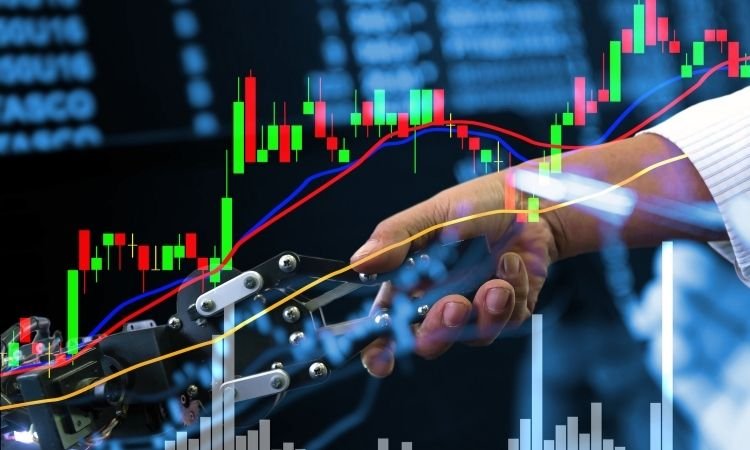Trade Surveillance System Market Growth, Analysis & Trends Outlook by 2025-2034
The global Trade Surveillance System Market Size has witnessed significant growth, reaching a value of approximately USD 1,580.20 million in 2024.

The global Trade Surveillance System Market Size has witnessed significant growth, reaching a value of approximately USD 1,580.20 million in 2024. Projections indicate a robust compound annual growth rate (CAGR) of 12.80% from 2025 to 2034, aiming to achieve a market size of around USD 5,269.91 million by 2034. This upward trajectory underscores the increasing importance of trade surveillance systems in maintaining market integrity and compliance.
Key Benefits of Trade Surveillance Systems
Trade surveillance systems offer a multitude of advantages to financial institutions and regulatory bodies:
-
Regulatory Compliance: These systems ensure adherence to financial regulations by monitoring trading activities and flagging potential violations, thereby mitigating the risk of legal penalties.
-
Market Integrity: By detecting and preventing fraudulent activities such as insider trading and market manipulation, trade surveillance systems uphold the fairness and transparency of financial markets.
-
Risk Management: Real-time monitoring enables institutions to identify and address suspicious activities promptly, reducing potential financial losses and reputational damage.
-
Operational Efficiency: Automation of surveillance processes streamlines compliance workflows, allowing firms to allocate resources more effectively and focus on strategic initiatives.
Key Industry Developments
The trade surveillance landscape has evolved with several notable developments:
-
Implementation of the Consolidated Audit Trail (CAT): In the United States, the CAT was developed following the 2010 flash crash and became fully operational in 2024. It monitors all U.S. stock market trades and orders in real-time, enhancing market transparency and aiding in the prevention of financial misconduct. However, it faces legal challenges from entities like Citadel Securities, which argue against its funding structure and raise concerns about privacy and security.
-
Technological Advancements: The integration of artificial intelligence (AI) and machine learning into surveillance systems has improved the detection of complex trading patterns, enabling more proactive identification of illicit activities.
Driving Factors
Several factors are propelling the growth of the trade surveillance system market:
-
Regulatory Stringency: Increasingly stringent financial regulations worldwide necessitate robust surveillance mechanisms to ensure compliance.
-
Rising Instances of Market Abuse: The growing sophistication of fraudulent activities compels institutions to adopt advanced surveillance solutions to safeguard market integrity.
-
Technological Innovation: Advancements in data analytics and AI have enhanced the capabilities of surveillance systems, making them more effective in detecting and preventing illicit activities.
COVID-19 Impact
The COVID-19 pandemic has had a profound impact on financial markets, leading to increased volatility and trading volumes. This heightened activity has underscored the need for effective trade surveillance systems to monitor and manage the surge in transactions. Additionally, the shift towards remote work environments has introduced new challenges in monitoring trading activities, prompting firms to invest in more sophisticated surveillance solutions.
Restraining Factors
Despite the positive outlook, certain challenges may impede market growth:
-
High Implementation Costs: The substantial investment required for deploying advanced surveillance systems can be a deterrent, especially for small and medium-sized enterprises.
-
Data Privacy Concerns: The collection and analysis of vast amounts of trading data raise concerns about data privacy and security, potentially leading to regulatory hurdles.
-
Complexity of Integration: Integrating new surveillance systems with existing infrastructures can be complex and time-consuming, posing operational challenges.
Market Segmentation
The trade surveillance system market can be segmented based on component, deployment mode, organization size, and vertical:
-
By Component:
- Solutions: Risk & Compliance, Reporting & Monitoring, Surveillance & Analytics, Case Management, and other solutions.
- Services: Managed Services and Professional Services, including Consulting, Deployment & Integration, and Support & Maintenance.
-
By Deployment Mode:
- Cloud-Based: Offers scalability and flexibility, with lower upfront costs.
- On-Premises: Provides greater control over data and customization options.
-
By Organization Size:
- Large Enterprises: Typically have the resources to implement comprehensive surveillance systems.
- Small and Medium-sized Enterprises (SMEs): May seek cost-effective and scalable solutions.
-
By Vertical:
- Banking: Requires stringent surveillance to comply with regulatory standards.
- Capital Markets: Involves high-frequency trading activities necessitating robust monitoring.
- Other Verticals: Including insurance and asset management.
Market Outlook
The future of the trade surveillance system market appears promising, driven by the continuous evolution of financial regulations and the increasing complexity of trading activities. The adoption of AI and machine learning is expected to further enhance the capabilities of surveillance systems, enabling more predictive and proactive monitoring. Additionally, the growing emphasis on holistic surveillance solutions that integrate market and communication surveillance is anticipated to create new opportunities for market expansion.
Market Overview and Trends
The market is characterized by a shift towards cloud-based solutions, offering scalability and cost-effectiveness. There is also a growing demand for 360-degree trade surveillance, providing comprehensive monitoring across various trading platforms and communication channels. Furthermore, the integration of advanced analytics and real-time monitoring capabilities is becoming a standard feature in modern surveillance systems.
Industry Segmentation and Regional Insights
Geographically, North America holds a significant share of the trade surveillance system market, attributed to the presence of major financial institutions and stringent regulatory frameworks. Europe follows suit, with increasing regulatory mandates driving the adoption of surveillance solutions. The Asia Pacific region is expected to witness substantial growth, propelled by the rapid expansion of financial markets and the increasing focus on regulatory compliance.
Analysis and News
Recent developments indicate a growing tension between regulatory bodies and financial institutions concerning surveillance mechanisms. For instance, the Consolidated Audit Trail (CAT) in the U.S. has faced legal challenges.
Major Key Players
- NICE Ltd.
- IBM Corporation
- eflowLtd.
- Aquis Exchange PLC
- ACA Compliance Group
- OneMarketData, LLC,
- Nasdaq, Inc.
- Software AG
- Sia Partners
- Verint Systems Inc.
- b-next holding AG
- TradingHub Group Limited
- Scila AB
- FIS Inc.
- Others
What's Your Reaction?

















